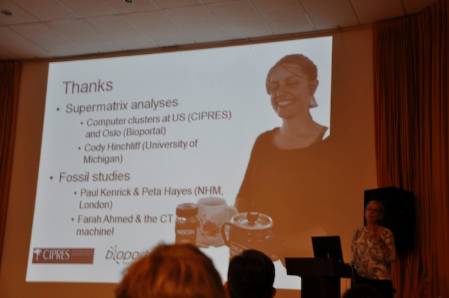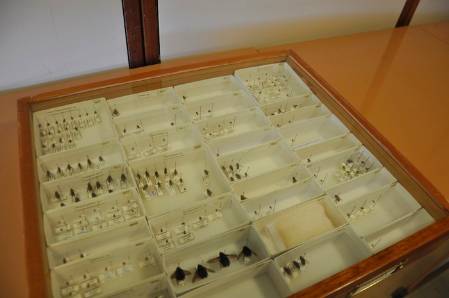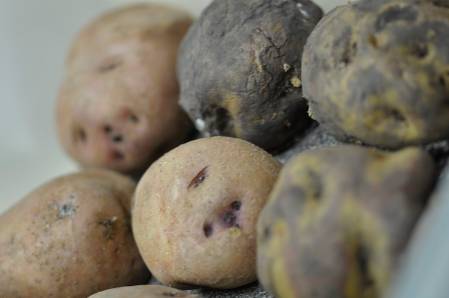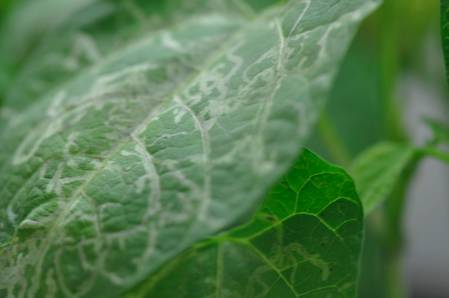I am in a hotel lobby in Lima, Peru (OK, that’s a bit of a lie - I was when I wrote this but now I'm back in UK…). There is, as with most cities globally, a high level of chaos around me involving road works, building works, giggling and cleaning. However I am in a happy place - mainly because I am in Peru and it is lovely to be back, but also because today I spent most of my time in the International Potato Centre (CIP) discussing a project and our projected findings with incredibly well informed folks (the Man of Potatoes below). So let me fill you in with a few details...
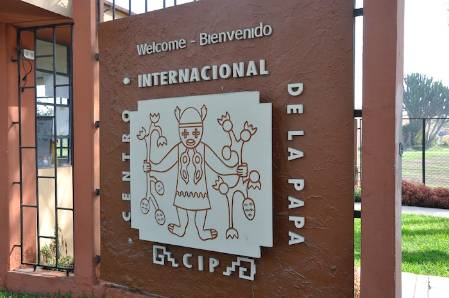 The Man of Potatoes at CIP, Peru
The Man of Potatoes at CIP, Peru
This field trip is the first of many, which is part of a larger project looking at potatoes, tomatoes and aubergines, their wild relatives and their associated insect fauna. Botanists, entomologists, modellers and digitisers at the Museum have got together to look through the collections, mine them for data and then go out into the field to fill in the gaps in our knowledge to enable us to start to map what will happen to our economically important species in the future.
A couple of days ago, after months of planning, Dr Diana Percy (aka Psyllid lady; Psyllids are very, very, very small jumping bugs) and myself flew from a cold and rainy UK to a muggy and hot Lima to join various colleagues who where already there.
Sandy Knapp, our intrepid leader, potato queen and lover of all things South American, was in Lima having come back from the field and took us this morning to the Institute. She has been working with various people at the Institute for a long time looking at the Solanaceae distribution in Peru but as well as working with the plants the Institute is also looking at the pest and pollinator species and their predators and parasitoids. This was great to hear as this was something that we were investigating too. The Centre consists of many plant workers, modellers, etc. and more importantly for me at this precise moment – entomologists.
We had a brief tour and then it was time for a very enlightening seminar (in Spanish) by Sandy to the group of scientists about Solanaceae and the work that she and other collaborators were performing involving the phylogentics of the group, as well as the project that we were undertaking over the next couple of years.
Sandy Knapp thanks collaborators on her project and shows a lovely photo of Tiina Saarkinen, who is in the field waiting for us to join her!
(Did you know that there are only 29 fossil records for the whole of Solanaceae? Which in laymen’s terms could mean that we have no real idea of where the potato came from…?)
Entomologists that we met were Dr Jurgen Kroschel as well as Veronica Cañedo Torres and Norma who were working on various agroecology and biodiversity studies focusing on potatoes and their associated insect communities. The facilities were great and we first walked into a lab where there were tiny pots containing one of the moth pest species.
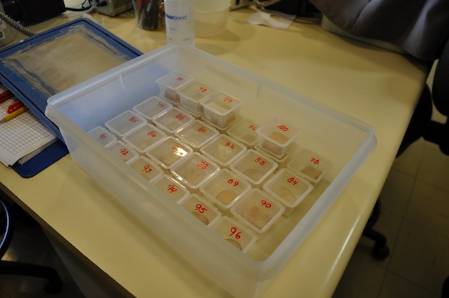 Pots containing moth pest species of solanaceae
Pots containing moth pest species of solanaceae
As well as looking at what species attack the potatoes they are looking at where on the plant the damage is occurring - i.e. is it the tuber (the lovely edible part) or is it the leaves, the stems etc; what part of the life cycle of the pest species is causing the damage (with the moths it is the caterpillar but with the beetles it is the larvae and the adult); but also which species are the most important and does it depend on where the plants are located (potatoes can be found thousands of meters up a mountain). So as well as the preserved material that they have caught out in the field through sweeping the plants, leaving out potatoes as bait, laying down pitfall traps etc they have reared material in the lab and have now colonies of the different insects.
We move past the living pots and head into the collection space proper. A lovely air conditioned room containing sealed cabinets full of wonderfully curated specimens. Veronica had prepared most of the material herself as well as identifying many of the species. There are, as with all collections, many more that had not been identified and this is where the collaborations between the institutes becomes fun - we can help each other out in terms of specimens and identifications and everyone benefits!
The fatties at the bottom of this drawer are tachinids which are fab parasitic flies.
Diana and I poked through the collections to gain insight into the types of species that they were collecting from the potatoes. Many of our preconceptions about which species would be present or would be more important were disbanded and the information that we gathered would help us strengthen our sampling strategy once we were in the field. (This is often the way of fieldwork - best laid plans and all that… flexibility is the name of the game... as well as entomological training; we have been trained by both the A-team and Blue Peter to enable us to build objects from a toilet roll and spare tyres to enable us to capture that elusive fly…)
We were then shown the rearing facilities - I could work here. We walked past carefully manicured gardens and trees with brilliant red tanager, the massive greenhouses that were chock full of potatoes, past the courts where dancing lessons were given on Wednesdays and into the new rearing facilities. Rooms with pots of insects in always makes me smile. Little containers, medium containers, large containers, all with potatoes and all with one species or another that is trying to maim or kill something.
Wounded potatoes
As well as the moths and the beetles, the major pests were the leaf mining flies which are easily recognisable by the excavated passage ways that they leave behind in the leaves.
Damage caused to leaves by leaf mining flies
These flies do not directly harm the tubers but reduce the overall fitness of the plant and so reduce the overall size and numbers of the potatoes.
They had large containers that housed either only flies or flies with different parasitoids to observe the affect of just pests or plant/pest interactions on the potatoes health. All very interesting stuff.
We left the Institute armed with scientific papers, species lists, sterilised sand (for rearing in the field ) and with more impatience to get into the field and see what was out there. Hopefully we will stop there once we are back from the field armed with more questions but sweetened with many specimens to look at and compare.
Good times lay ahead. more to follow on the search for wild potatoes and the joys of pootering at an altitude of 4,000m.....



